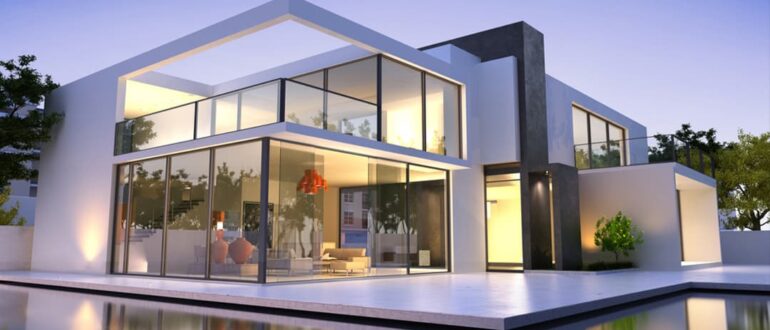The Historical Context of Villa Architecture in Dubai
The architectural landscape of Dubai is a testament to the region’s rich cultural heritage and historical evolution. Traditional villas in Dubai are characterized by distinct architectural styles that reflect local customs, materials, and climate. The most notable features of these traditional villas include the use of natural materials such as coral stone, mud, and palm fronds, which not only embody the essence of sustainable practices but also enhance the aesthetic value of the structures. The integration of wind towers, or “barjeel,” in villa design exemplifies an ingenious adaptation to the arid climate, facilitating natural ventilation and cooling.
The layout of traditional villas typically emphasizes privacy and communal living. Central courtyards serve as the heart of these homes, providing a shaded area for family gatherings while maintaining a buffer from the external environment. The decorative elements often reflect Islamic art, characterized by intricate geometric patterns, stucco detailing, and wooden lattice work. Such embellishments are not merely ornamental; they also serve functional purposes, allowing light to filter through while maintaining privacy.
As Dubai continues to evolve, the dialogue between traditional and modern architectural styles remains vital, underlining the city’s journey towards a unique architectural identity that honors its past while embracing the future.
Key Elements of Modern Villa Renovation in Dubai
Modern villa renovations in Dubai are characterized by a blend of contemporary design trends and traditional elements, providing homeowners with a unique living experience. One of the most significant aspects of these renovations is the adoption of open floor plans. This design choice not only enhances the accessibility of spaces but also promotes an airy and spacious ambiance, allowing natural light to flow freely throughout the home. As a result, open floor plans have become a favored style among those looking to modernize their villas while maintaining a connection to the outdoors.
Sustainable building practices are also gaining traction in Dubai’s renovation landscape. Homeowners are increasingly recognizing the importance of incorporating eco-friendly materials and energy-efficient solutions. These practices not only reduce the environmental impact of renovations but also contribute to long-term savings on energy costs. Innovative technologies such as solar panels, green roofing, and energy-efficient windows are essential in creating a sustainable villa that aligns with modern living standards.
Additionally, integrating smart home features has become a crucial element in modern villa renovations. Technologies that allow for remote control of lighting, heating, security, and even appliances enhance comfort and convenience for residents. Smart home systems not only offer a luxurious living experience but also improve energy management, contributing to both sustainability and efficiency within the home.
Aesthetic choices play a vital role in modern villa renovations, as they define the unique character of each property. Homeowners often opt for a cohesive color palette that reflects modern sensibilities while incorporating traditional motifs. The selection of materials, such as natural stone, timber, and metal finishes, can evoke a sense of luxury and timelessness. Moreover, landscaping choices that harmonize with both modern and traditional styles can create an inviting outdoor environment, further enhancing the overall appeal of the renovated villa.
Successful Case Studies of Merging Tradition and Modernity
Dubai’s villa renovation scene has witnessed remarkable projects that epitomize the successful integration of traditional and modern design elements. One notable case study is the renovation of a 1970s villa in Jumeirah, where the homeowners aimed to preserve the essence of their family heritage while updating the space for contemporary living. The design team faced the challenge of incorporating the traditional majlis while integrating modern amenities. By using local materials and traditional motifs in the facade, they maintained the cultural identity of the villa while introducing sleek lines and open spaces characteristic of modern design. The outcome was a harmonious blend that respected the past while embracing the future.
Another prominent example is the renovation project in Al Wasl, where an outdated villa was transformed into a sleek modern home without sacrificing its traditional roots. The architects faced unique challenges, including spatial constraints and the need for structural improvements. By collaborating closely with the homeowners, who envisioned a family-centric space, the professionals introduced innovative solutions such as flexible living areas that could adapt to different family needs. They achieved this through the strategic use of glass walls that created a seamless connection between indoor and outdoor spaces while reflecting the surrounding landscape.
These case studies illustrate the broader implications of villa renovations on community aesthetics and cultural identity. The successful merging of tradition and modernity not only enhances individual properties but also contributes to a sense of belonging within the vibrant tapestry of Dubai’s residential landscape. Homeowners often express satisfaction with the preservation of cultural elements, noting that their renovated spaces become a bridge between the past and present. Ultimately, these renovations serve as powerful exemplars of how thoughtful design can honor heritage while meeting contemporary lifestyle demands.




Comments 0